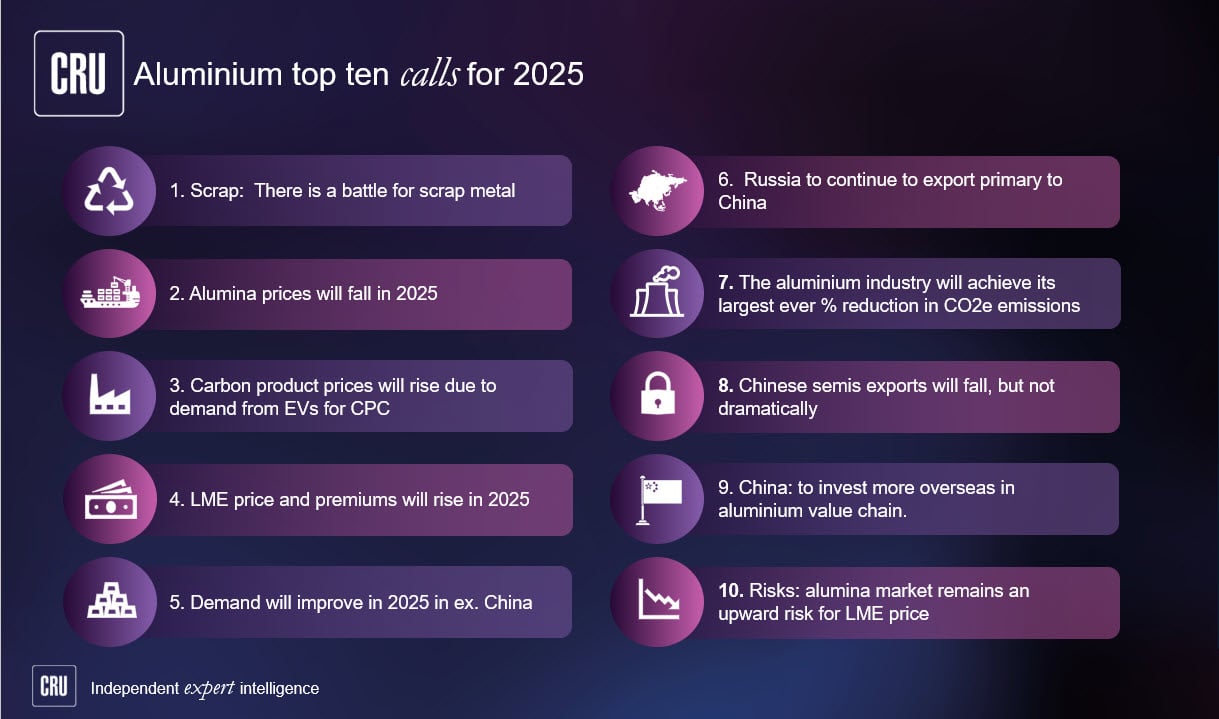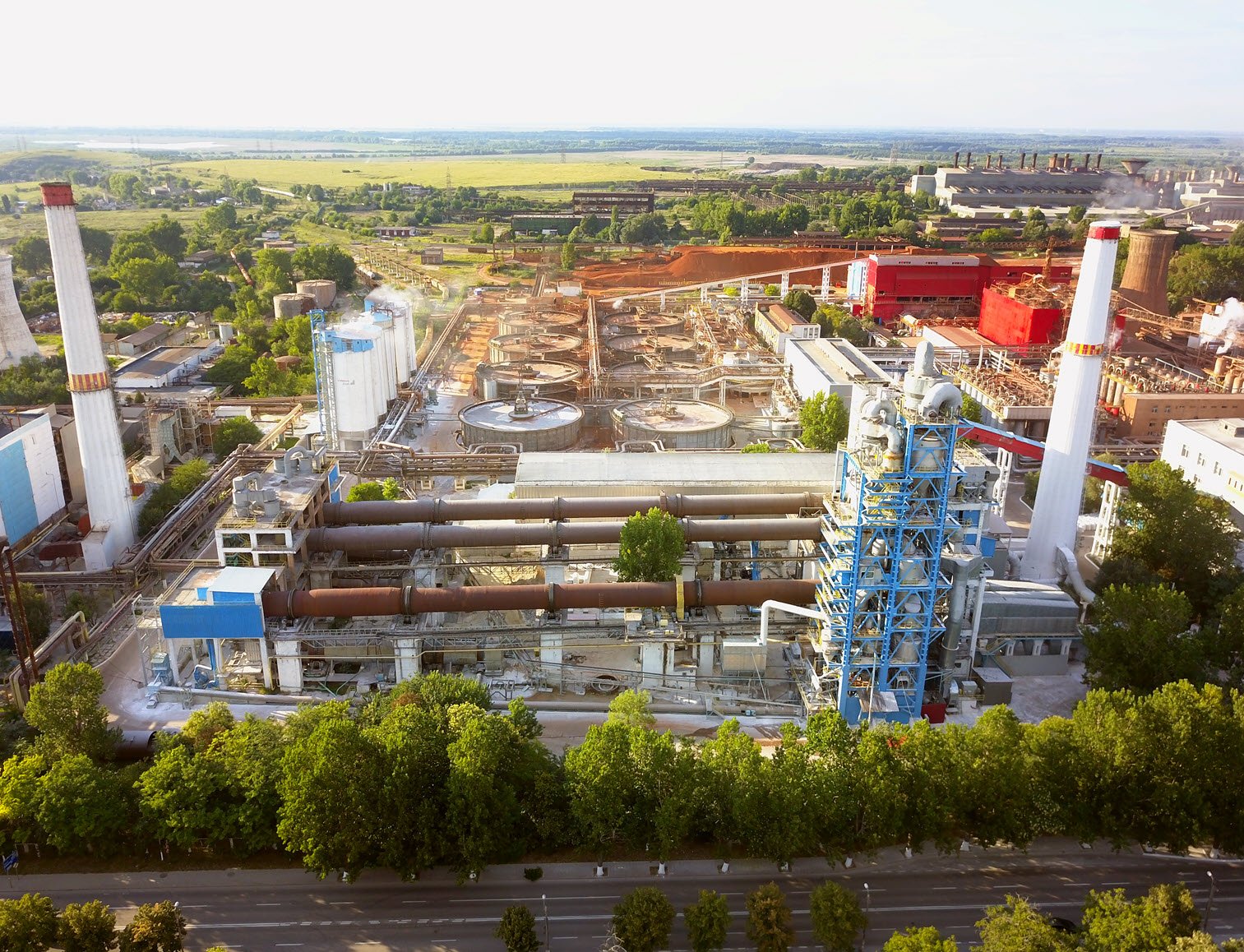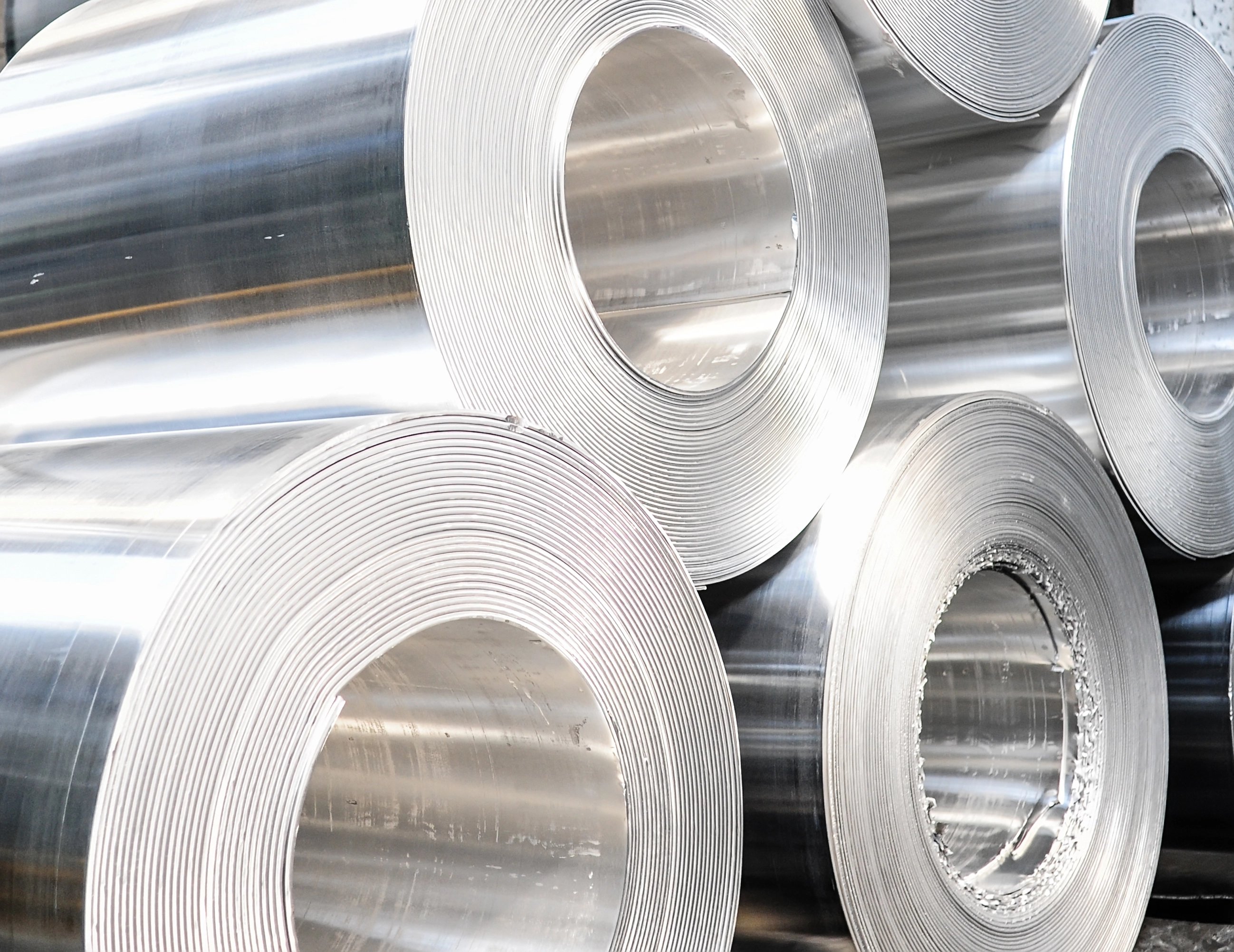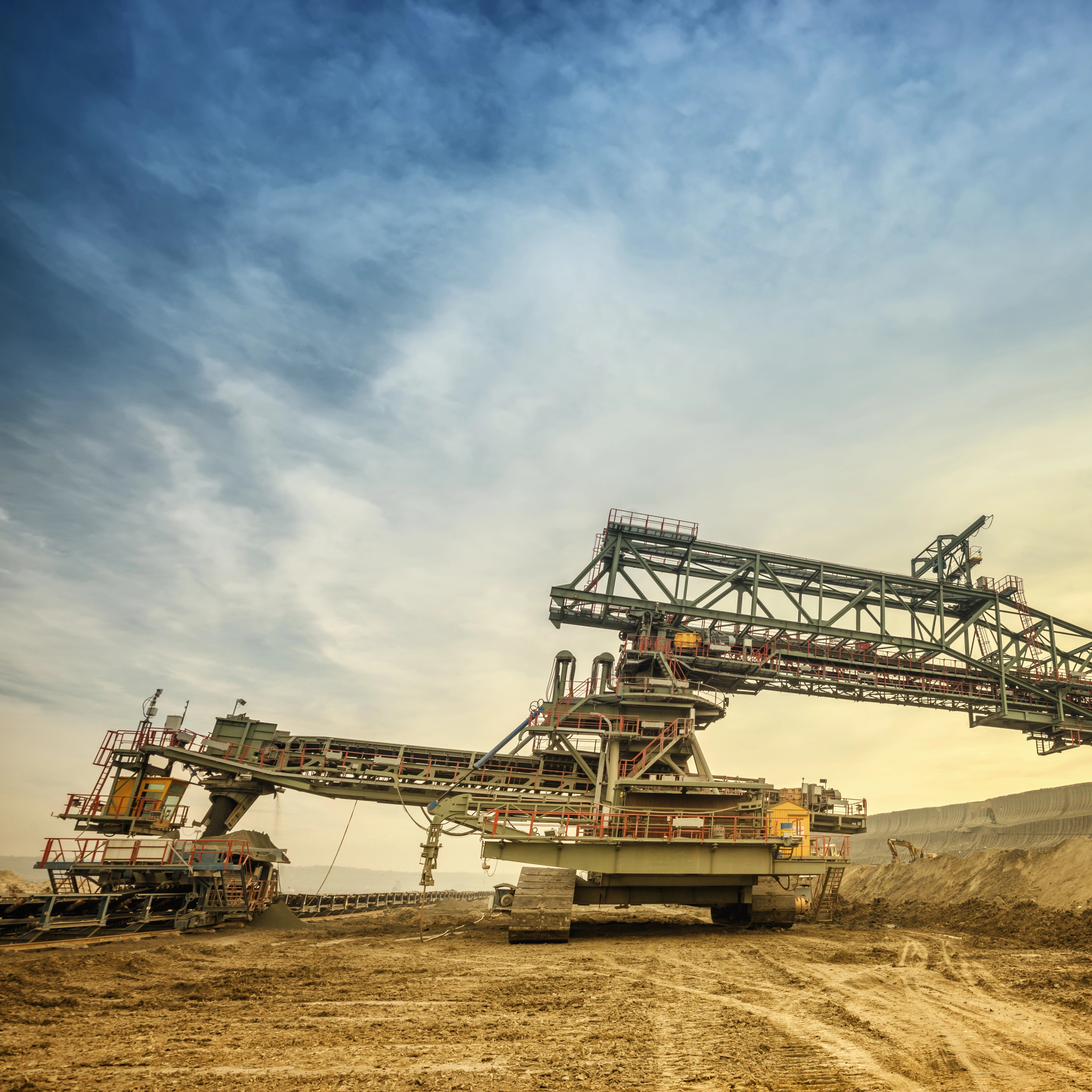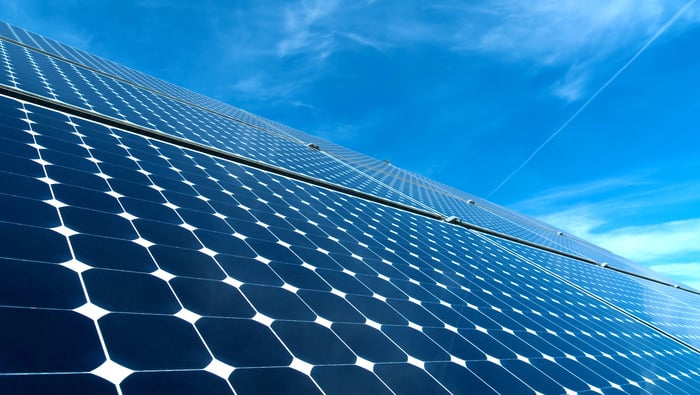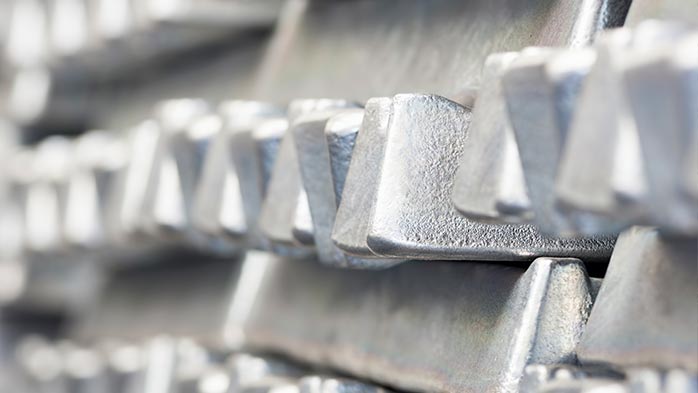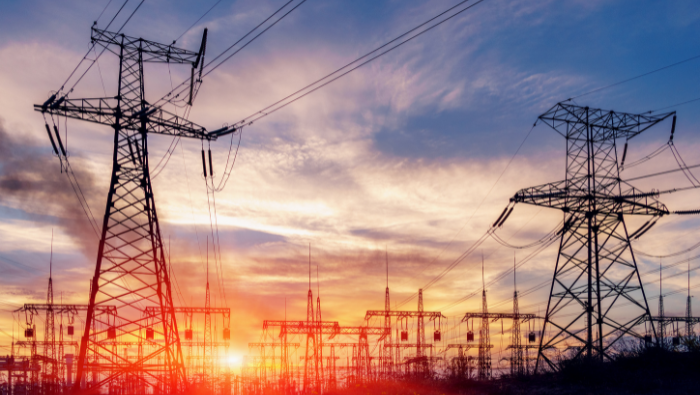Carbon products, namely coal tar pitch and calcined petroleum coke, are ancillary inputs into the production process of primary aluminium, and they constitute the main raw materials in the production of anodes. Primary aluminium smelting, or the conversion of alumina into molten aluminium, undergoes an electrolysis process which requires the use of anodes. An aluminium smelter either produces those anodes onsite within a captive carbon plant, or purchases them from third party suppliers. Anodes are replaced periodically, typically once a month, although that depends on the size of anode and the quality of carbon products. Therefore, a continuous supply of carbon products is needed to produce primary aluminium. Many smelters do not have a carbon plant on site and generally endure high carbon costs compared to smelters that produce their own anodes, as anodes must be purchased from a third party. For smelters selling excess anodes, the revenue gained would offset its carbon production cost.
Green petroleum coke is sourced from oil refineries and is derived from the residue of the refining and forms a small proportion of its output. When calcined, it is used in the manufacture of both carbon anodes and cathodes. On the other hand, coal tar pitch is a residuum from the distillation of coal tar, which is a by-product of the carbonisation of coal into metallurgical and foundry coke.
The past two years witnessed a substantial rise in carbon costs for smelters worldwide, buoyed by rising prices of purchased coke and pitch. This has pushed the cost component of carbon products for some smelters from a tenth to a fifth of its site cost. With coke and pitch prices rising to historical highs, this has meant the pinch was being felt by aluminium smelters worldwide. For a typical smelter’s cost profile, carbon costs are typically the third largest component of the cost profile, behind power processing and alumina purchasing costs. For some smelters, carbon products are now the second largest. Calcined petroleum coke prices are the main drivers as pitch represents around 15–20% of the carbon material needed. Their respective use rates average around 0.35 t and 0.08 t per tonne of aluminium produced.
The rising costs of strategic raw materials
The main causes for the spiralling increase in carbon products prices were supply side disruptions, mostly in China, as well as high aluminium prices, increasing raw materials demand and higher feedstock cost – worsened by the war in Ukraine as it resulted in high crude oil and fuel prices. Prices peaked in 2022 Q2 on a quarterly average and continued to rise before losing momentum and started to come off from historical highs in 2022 Q3. Prices began to soften following a decline in oil prices, falling LME prices and threats of further smelter closures, thereby casting fears of falling demand. To provide an indication of the substantial rise in carbon products, the mid-price for calcined coke CIF Middle East averaged $896 /t in 2022, this constitutes an 80% rise year-on-year, and a 237% increase on the 2020 average. Similarly, European coal tar pitch prices increased on average in 2022 by 57% year-on-year and by 89% on the 2020 average.
In Europe, the combination of high power prices, a deteriorated economy, inflationary pressures and a falling aluminium LME price led to more smelters announcing curtailments during 2022, underpinning our view that prices will come down from the peak in 2022.
What does this mean for smelter profitability?
Smelter profitability was buoyed by strong aluminium prices which mean that the pinch of rising carbon costs was less severe than it would have been normally. Nonetheless, this has clearly exposed high-cost smelters to the risk of carbon products, and spurred a need to find solutions to mitigate and manage CTP and CPC price volatility. In 2022, carbon cash costs constituted 19.1% of smelters’ site costs ex. China. This is compared to 14.5% and 11.8% in 2021 and 2020, respectively.
But what does this mean to the bottom line of a typical smelter e.g., in the GCC? Average carbon costs from 2015–2020 in the GCC was $177 /t for that period. In 2021 and 2022, carbon costs were $83 /t and $177 /t higher, respectively than that average.
In the world ex. China, CRU is only forecasting an increase in primary production of 1.3% in 2023, and any further weakening in LME prices could see the closure of further European smelting capacity. This would mean even lower demand in Europe for carbon products in 2023 than already forecasted, with a gradual recovery only expected in 2024. Meanwhile, we expect other regions in the world ex. China to require higher supply of carbon products.
Pressures on carbon products’ supply persists
Carbon products are facing structural shifts in market dynamics that will affect their fundamentals in the medium- to long-term. In the case of green petroleum coke, high quality low sulphur GPC (low sulphur and vanadium content) has bullish demand from graphite cathode producers that have higher tolerance levels to carbon prices. This would divert low sulphur GPC away from CPC that is required for the production of anodes. Furthermore, this increasing competition from the graphite electrode industry will likely intensify, as EV battery demand skyrockets.
Another important factor is the structural change within the steel industry. Crude steel is primarily produced via two methods – the blast furnace-basic oxygen furnace (BF-BOF) process and electric arc furnace (EAF) process. The former uses iron ore and metallurgical coke, while the latter relies primarily on recycled steel and electricity. Coal tar is a by-product of the BOF process, which is increasingly losing share to the EAF process, thereby decreasing the potential supply for coal tar.
In the case of coal tar pitch, Ukraine is a major supplier of both coal tar and coal tar pitch into Europe, and the war is creating supply tightness. Nonetheless, tight coal tar supply availability is still observed due to blast furnace closures driven by weak steel demand.
Carbon product prices are forecast to stabilise, but spikes in carbon costs will continue to pose a risk management issue for aluminium smelters in the longer term. Primary aluminium smelters are incentivised to seek long term solutions to mitigate potential future increases in carbon product prices and to effectively manage the cost of its strategic raw materials. Smelters would be looking at potentially integrating the supply of CPC and CTP into their supply chain via upstream investment or purchasing equity in existing suppliers.
Read more insights and analyses on aluminium here.







